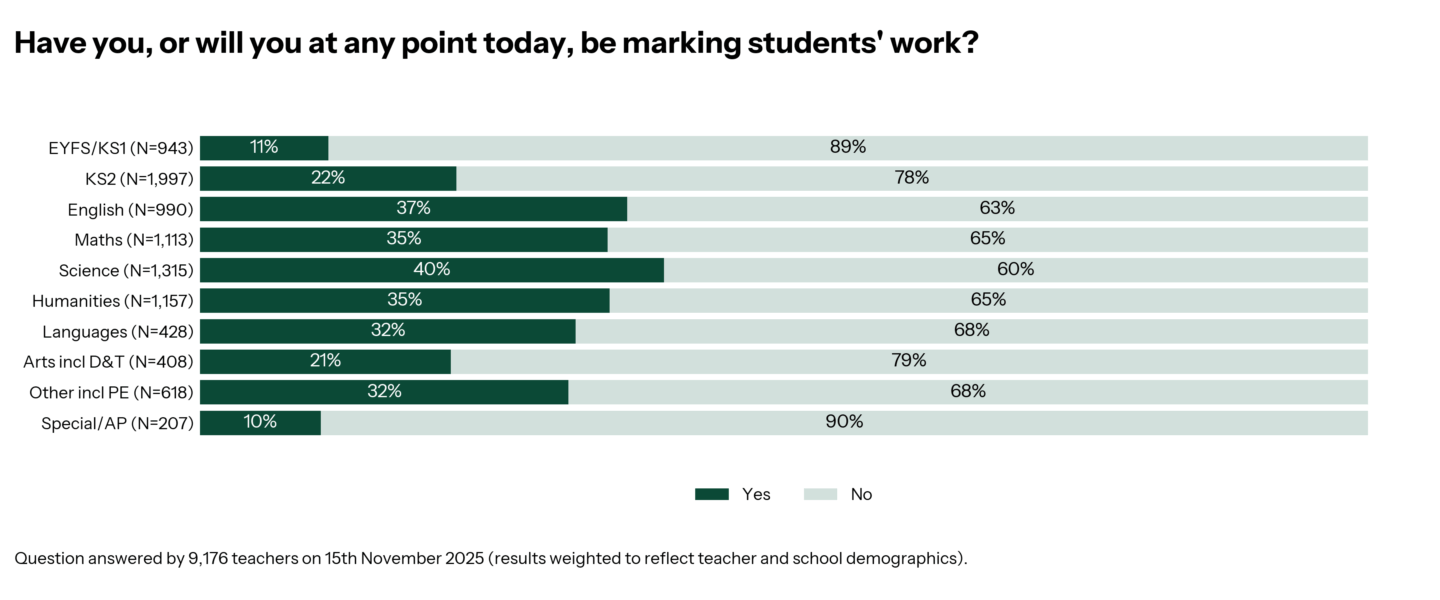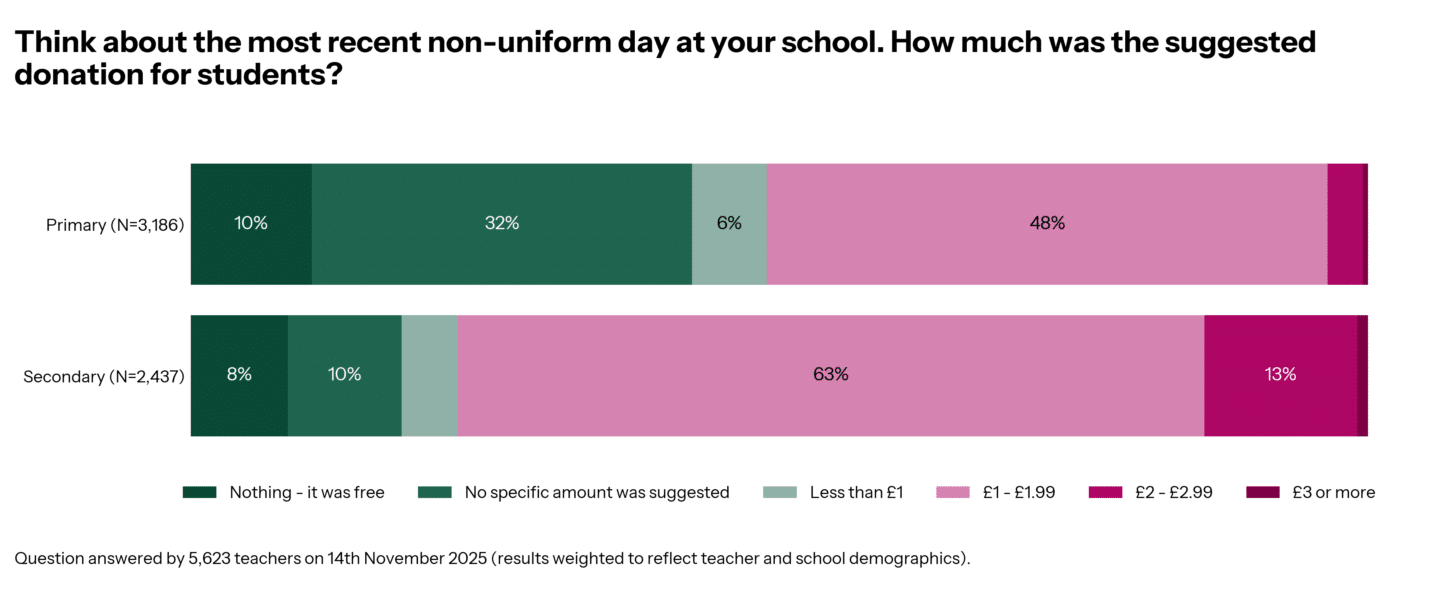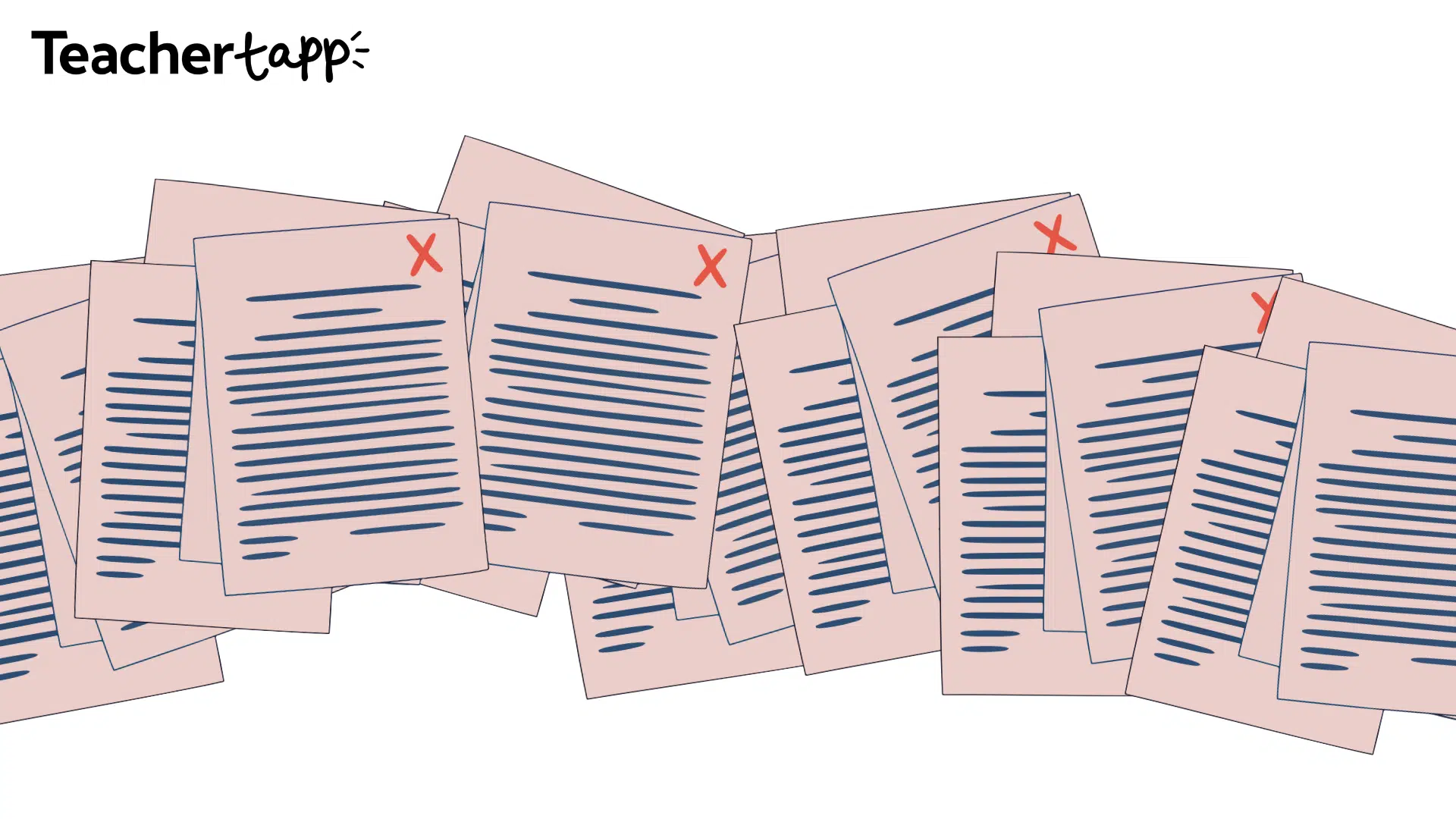Hello Teacher Tappers!
What a busy month November has proven to be! The weather has finally turned and the ‘C’ word is being thrown around as the massive organisation mission behind the Nativities and concerts begins to ramp up.
You pick the winners
Here at Teacher Tapp we’ve also been thinking about Christmas, and this month, it’s you, the Teacher Tappers, choosing the winners of our prizes that will be sent out next month, just in time for the end of term. We have Teacher Tapp Star Boxes crammed with Teacher Tapp goodies, and we are calling for nominations for who to send them to!
Getting involved is easy: fill in this form, and tell us why your friend (or even you!) loves Teacher Tapp for a chance to receive some special post. But be quick! The form will close on the 30th of November. You can read the Ts and Cs here.
Resignation?
The autumn term isn’t usually a busy one for job hunting and interviews, but it is likely to be the term where those who will make the move make up their mind that they’re going to hit the job boards and start finding a new role.
Of course, you might think about resigning and be daydreaming of a job-free life with no intention of putting those thoughts into action! However, it does look like these thoughts occur to some groups more than others. Primary teachers are more likely to ‘constantly’ or ‘often’ think about resigning compared to secondary teachers (33% vs 26%).
Comparing classroom teachers to those with leadership responsibility revealed no significant statistical difference, while the same isn’t true when we compare state-funded schools and private schools. Although teachers in private schools are just as likely teachers in state-funded schools to “constantly” think about resigning (11% and 12%), there is a difference at the other end of the scale. Private school teachers are more likely to report they “rarely” or “never” think about resigning, compared to teachers in state-funded schools (46% vs 40%).
Another group where we see a significant difference is when we cross this question with one of our regular behaviour questions. Teachers reported that learning in their most recent lesson stopped altogether due to student behaviour are almost twice as likely to report that they “constantly” think about leaving (8% vs 15%). and also much less likely to report they “rarely” or “never” think about leaving (46% vs 32%).

What might this tell us about keeping teachers happy and wanting to stay in their current school? It seems that student behaviour makes the biggest difference, but perhaps that isn’t the full picture.
When we dug a little deeper, we discovered that teachers who reported wishing senior leaders improved student behaviour weren’t more likely to consider resigning, than those who wished senior leaders reduced workload.
The big difference was between ALL of those who believed senior leaders could do more to improve wellbeing, and those who thought their senior leaders were doing everything they could (59% vs 35%).

Do you have other suggestions for questions we could cross-check against to find out who is most at risk of thinking “constantly” about resigning? Write in and tell us! england@teachertapp.co.uk.
Marking on the weekend
Marking on a Saturday or Sunday can sometimes feel unavoidable: perhaps your PPA has been taken for cover, or you are one of those teachers who cannot find a quiet place to mark when you need to plough through that stack of exercise books or test papers.
Weekend marking is slightly up this year versus last year (27% vs 24%), but down compared to previous years, including the pre-pandemic 2019 when it was 34%.
As you might expect, it is teaching staff with the higher marking workload who are more likely to be weekend marking – 28% of classroom teachers are marking, compared to 20% of senior leaders.
English teachers are often thought of as the group that carries the heaviest marking workload, so it might come as a surprise that it’s science teachers who are the most likely to report marking on the weekend – but don’t worry, the English teachers weren’t far behind (40% and 37% respectively). At the other end of the scale, teachers of special/AP and EYFS/KS1 were the least likely to have been red-penning work (10% and 11%).

Non-uniform days
Now onto a very different sort of workload: the non-uniform day! Dress down day, own-clothes day…whatever you call it, they usually come with an expectation of a donation. But what is typical to donate these days? And do teachers feel like they are more trouble than they’re worth?
Time to check the numbers! First up – some schools do have uniforms but do NOT have non-uniform days, this is true in 16% of teachers in secondaries and 1% of teachers in primaries.
Among those who do have uniforms AND non-uniform days, it’s primary teachers who are reporting more non-uniform days: 86% of primary teachers compared to 51% of secondary teachers. In fact, 17% of primary teachers reported already holding three non-uniform days this year compared to 4% of secondary teachers.

But how much are schools charging? Primary teachers were more likely than secondary teachers to say their last day was free or had no specific suggested donation (42% vs 18%). More than half (54%) of primary teachers reported their last non-uniform day asked for £1 or more, and the same was true for 78% of secondary teachers.

But do teachers WANT non-uniform days? 38% of secondary teachers and 24% of primary teachers say they agree that they do more harm than good, and when the results are broken down by school policy (those schools that have non-uniform days and those that don’t), schools where non-uniform days are not allowed are much more likely to agree non-uniform days do more harm than good compared to teachers in schools where they have non-uniform days (55% vs 30%).
Have you changed your school policy on non-uniform days? Write in and tell us what has changed since you switched, and whether you think it has made a positive difference england@teachertapp.co.uk.
+ BONUS chilly teachers
And now onto a different kind of uniform altogether: hats, gloves, scarves – it’s cold classroom time!
Fortunately, most teachers appear to be in warm classrooms, with just 4% reporting they felt cold and their heating wasn’t on. However, of the 80% who said the school had put their heating on, only 26% have working radiators in their room 😬🥶. Maybe wrapping up warm will be the main objective over the next few months…
Daily Reads
The top read this week was one of Teacher Tapp’s special blogs all about the ECT experience. Read about the first term here. 13% of ECTs clicked and read last week.
Got a blog you think we should feature? Email us at england@teachertapp.co.uk and we will check it out!





